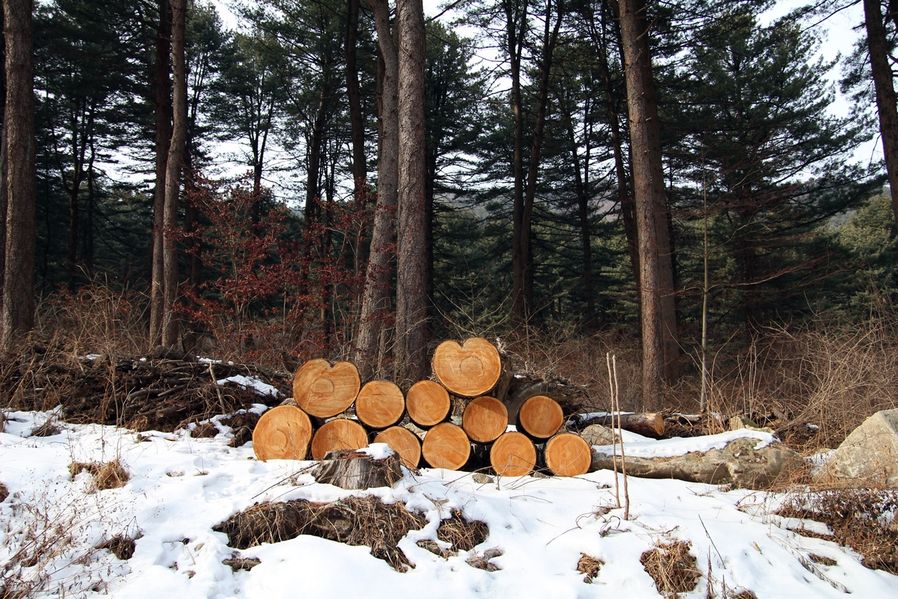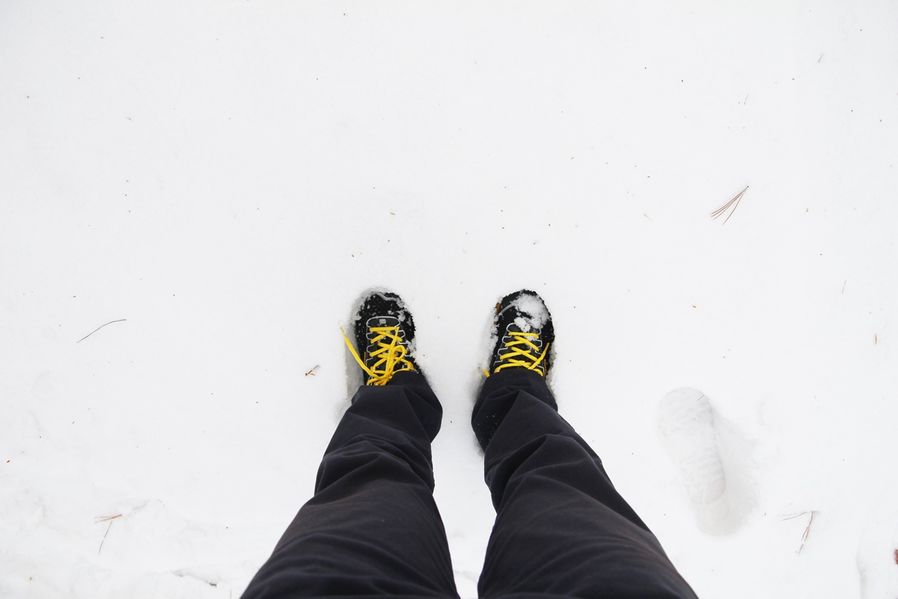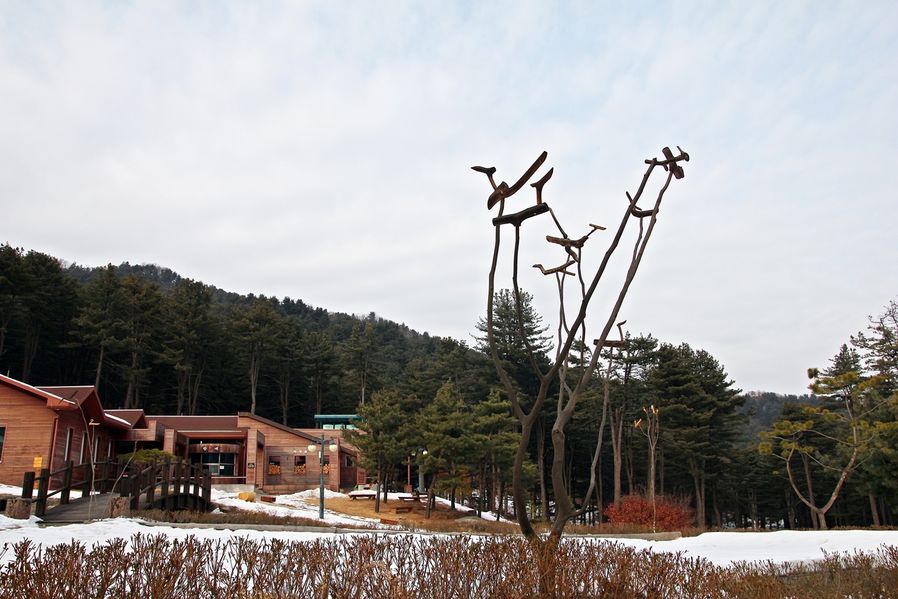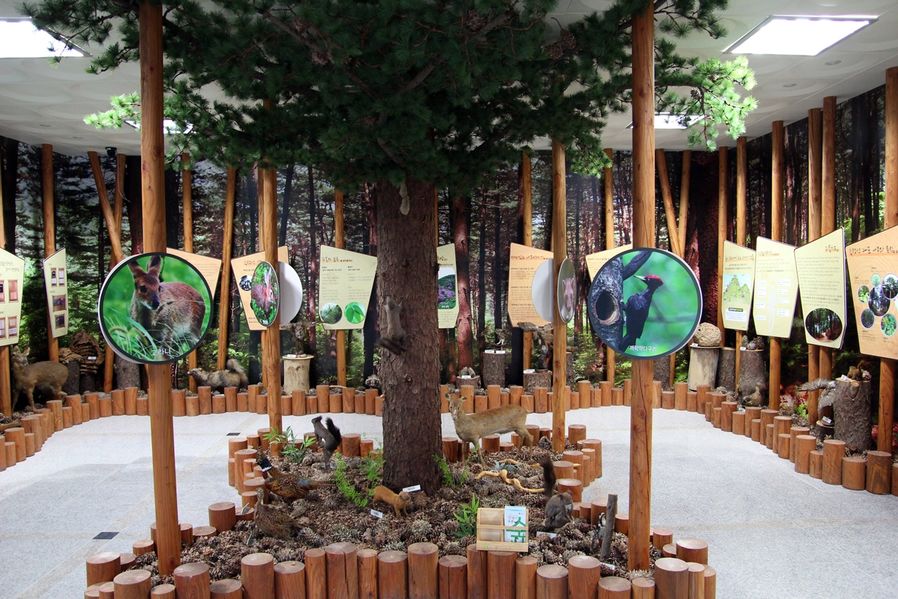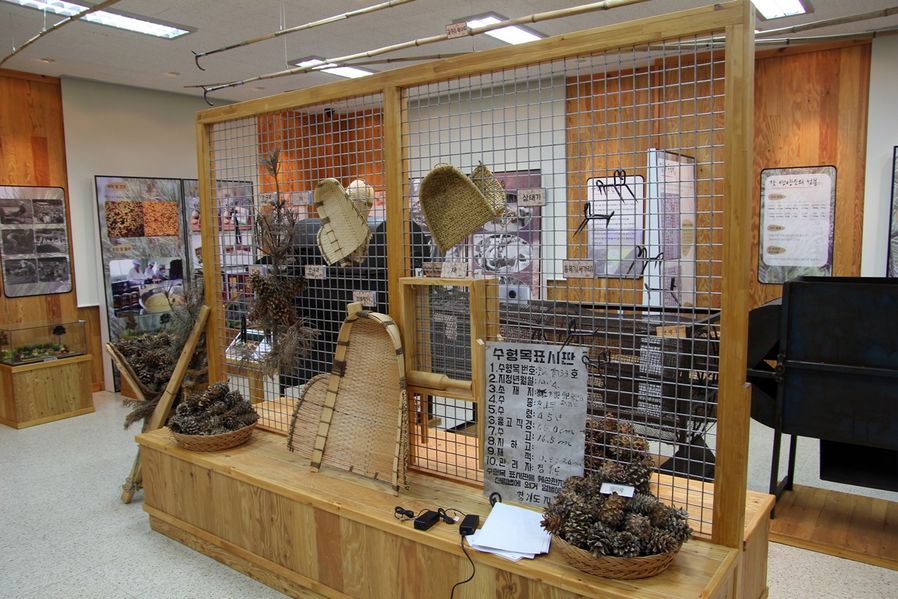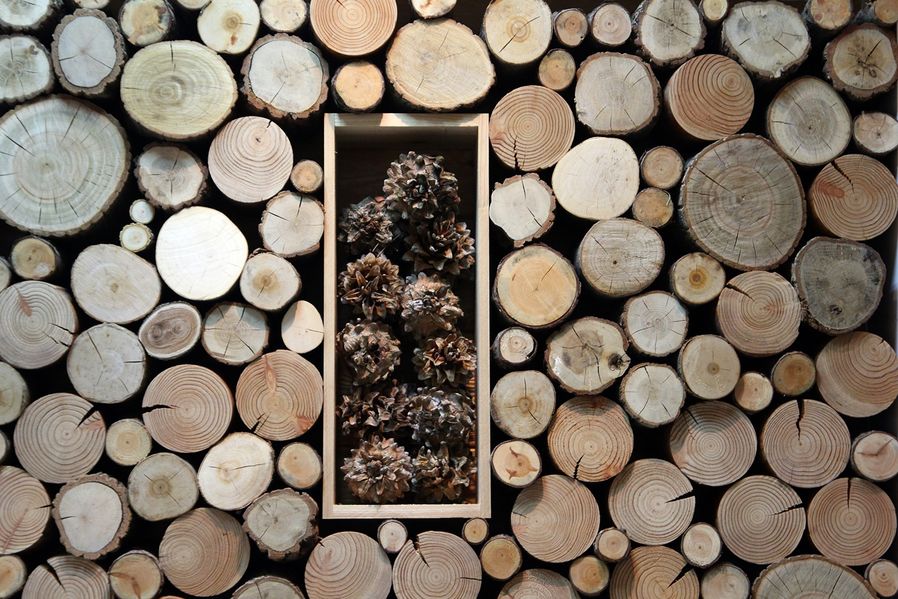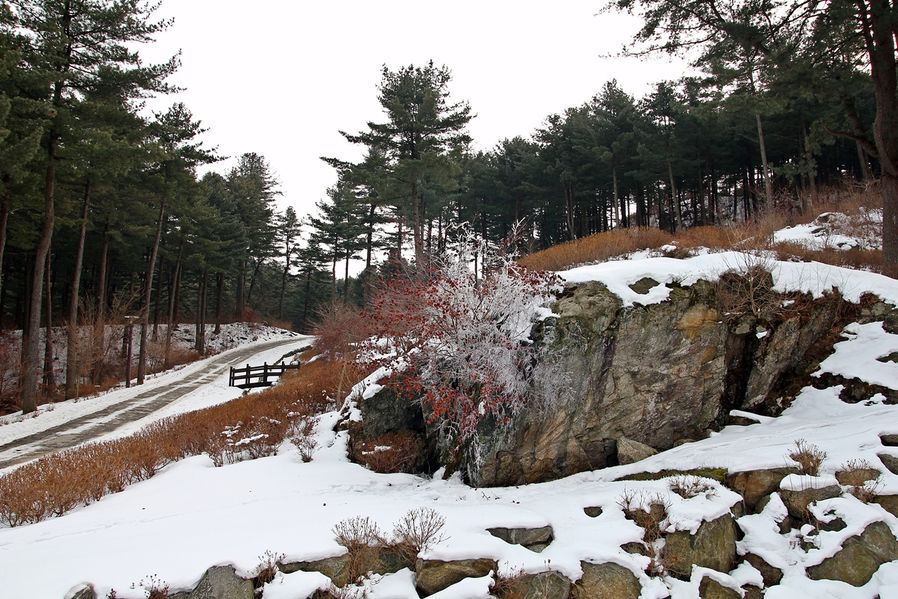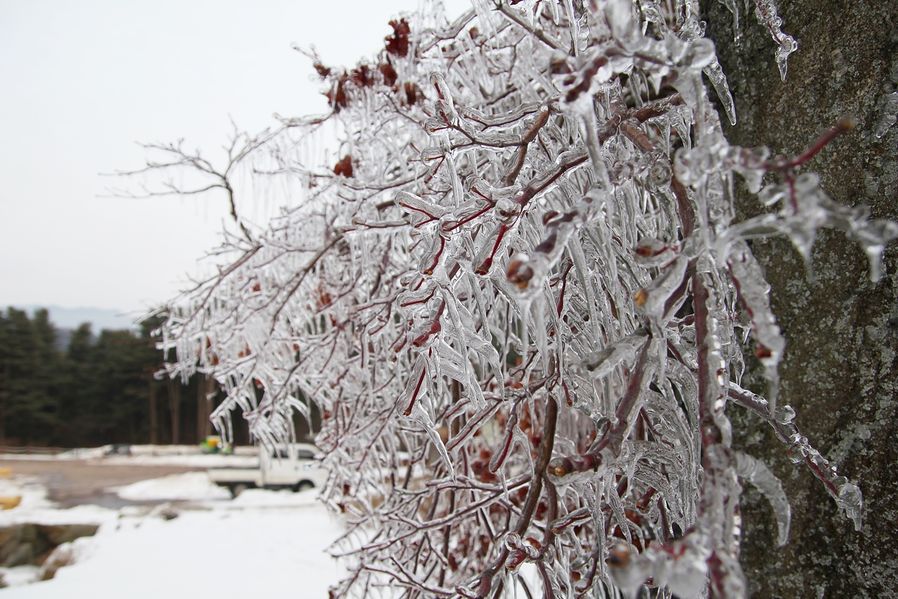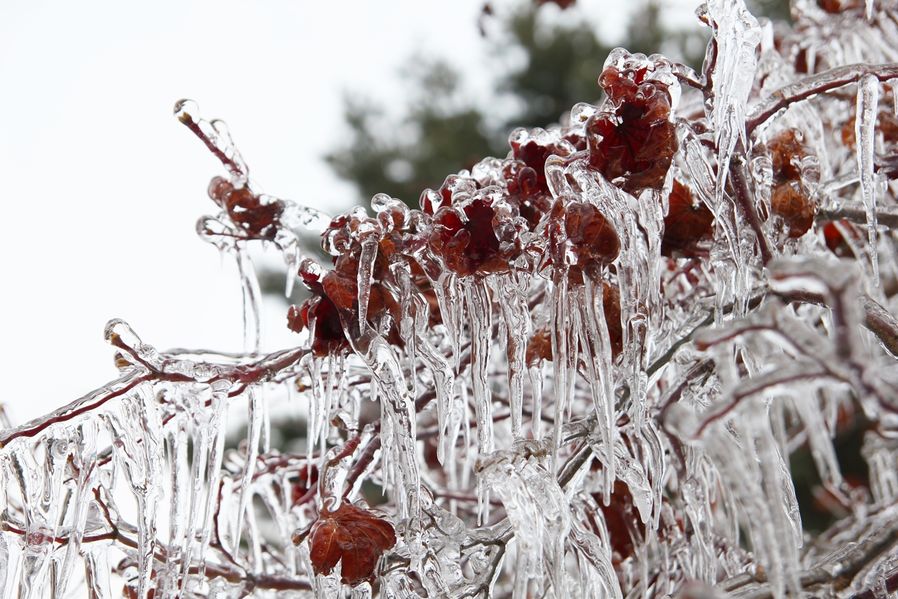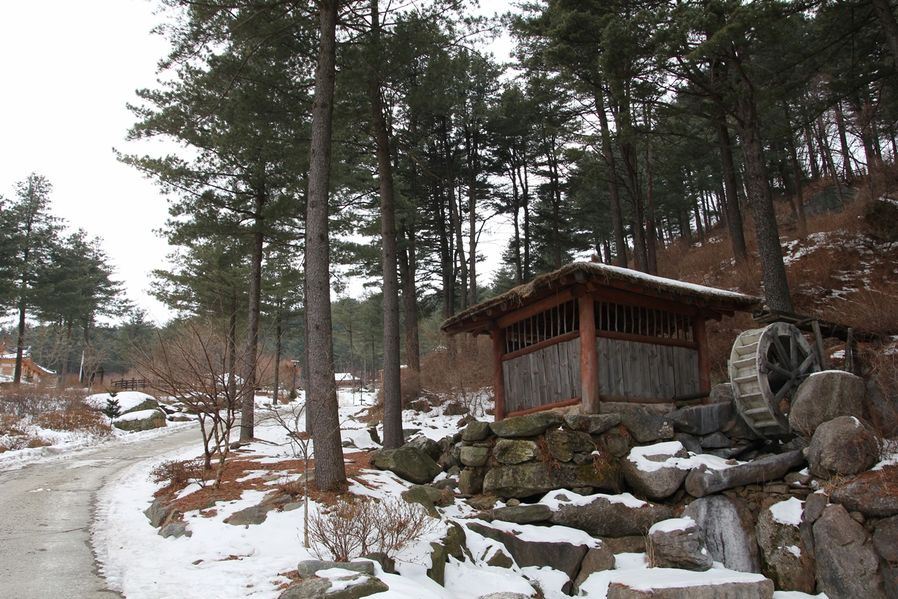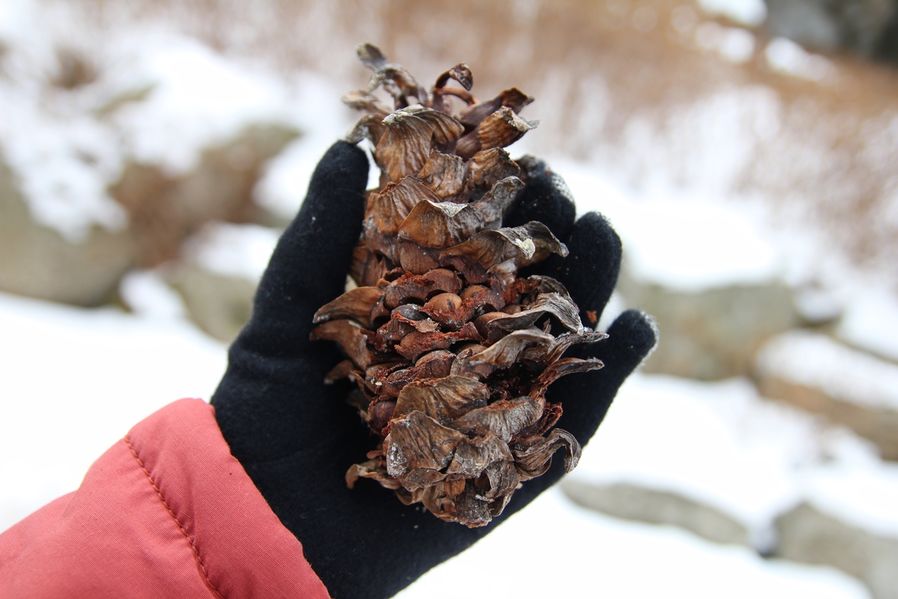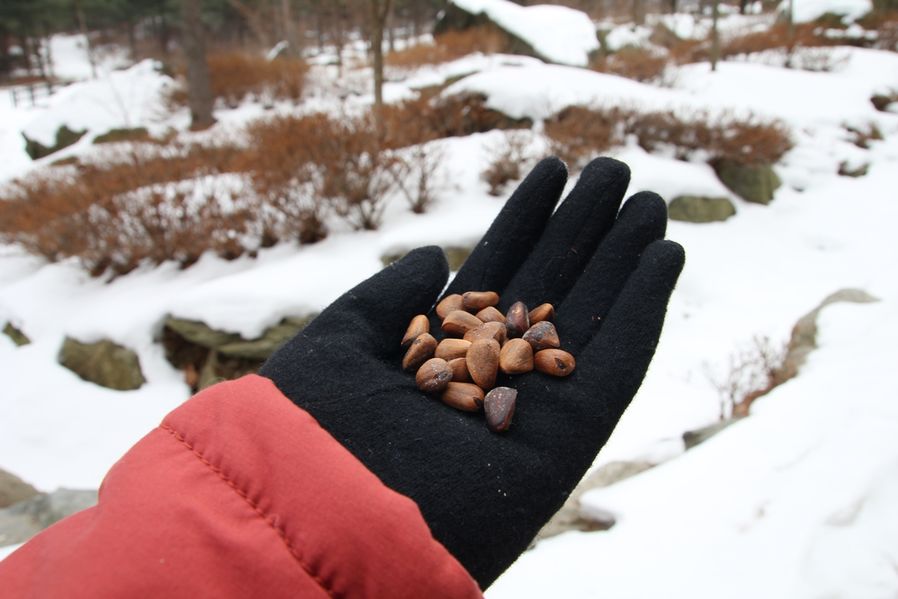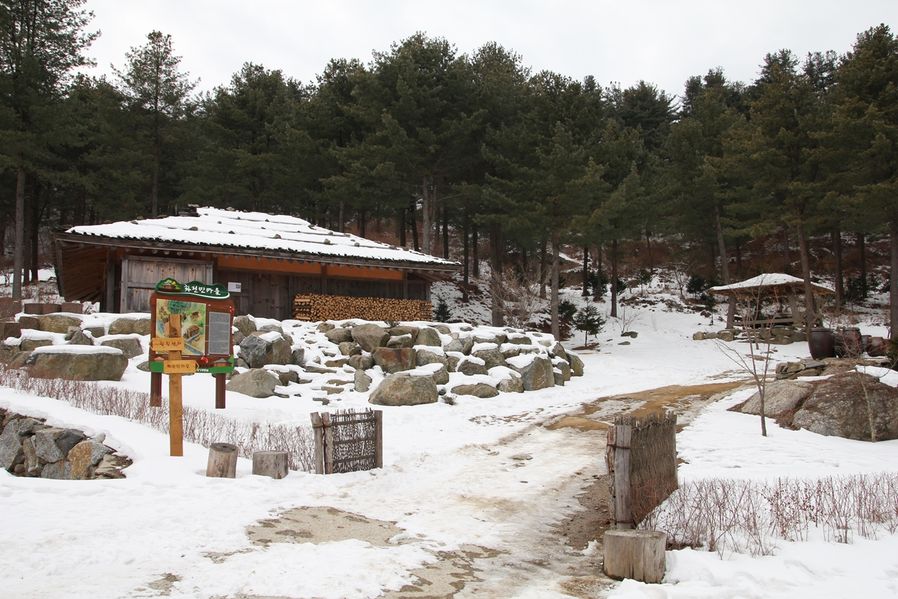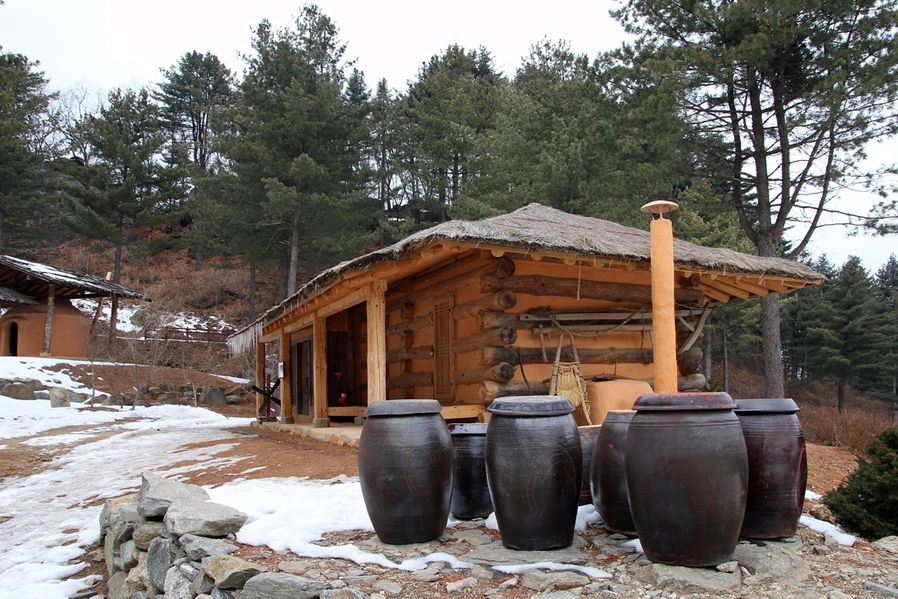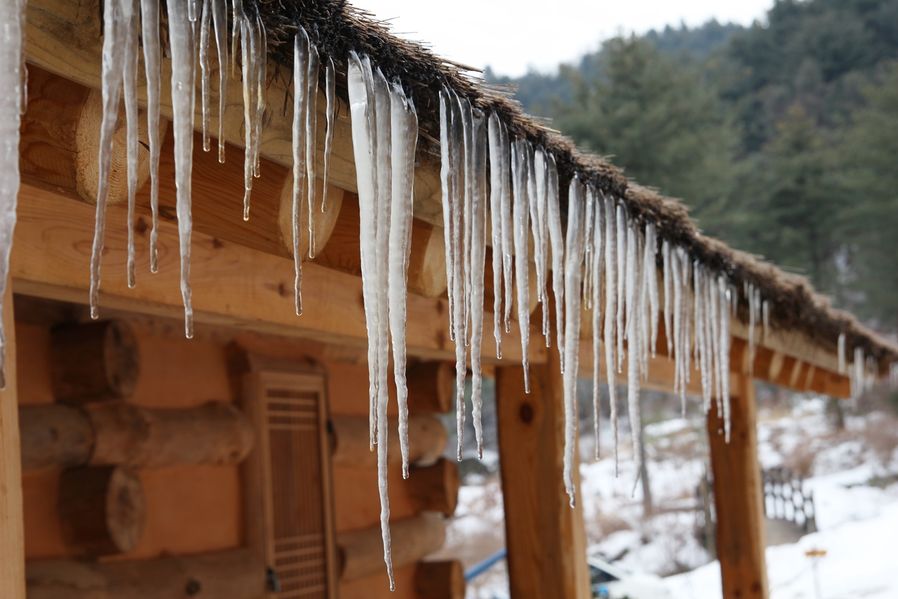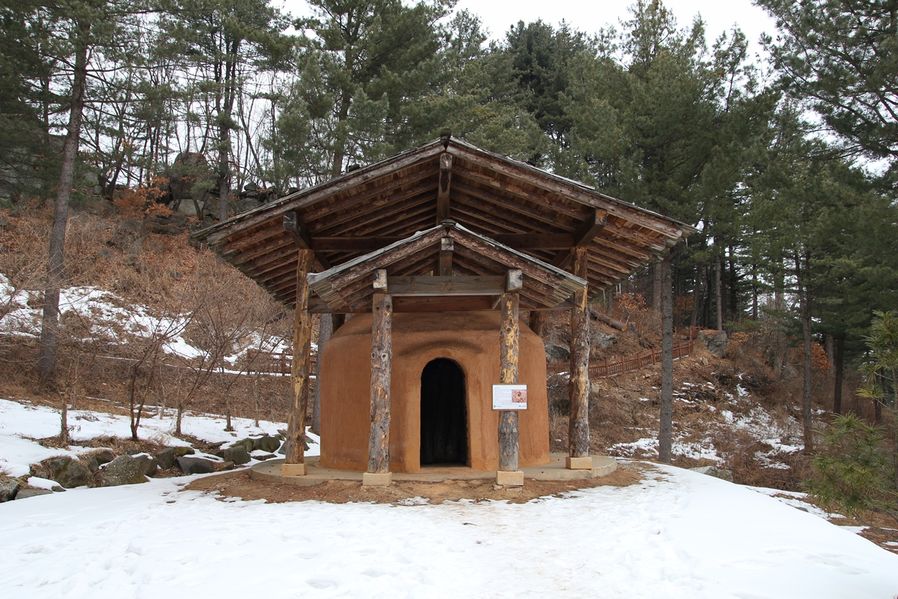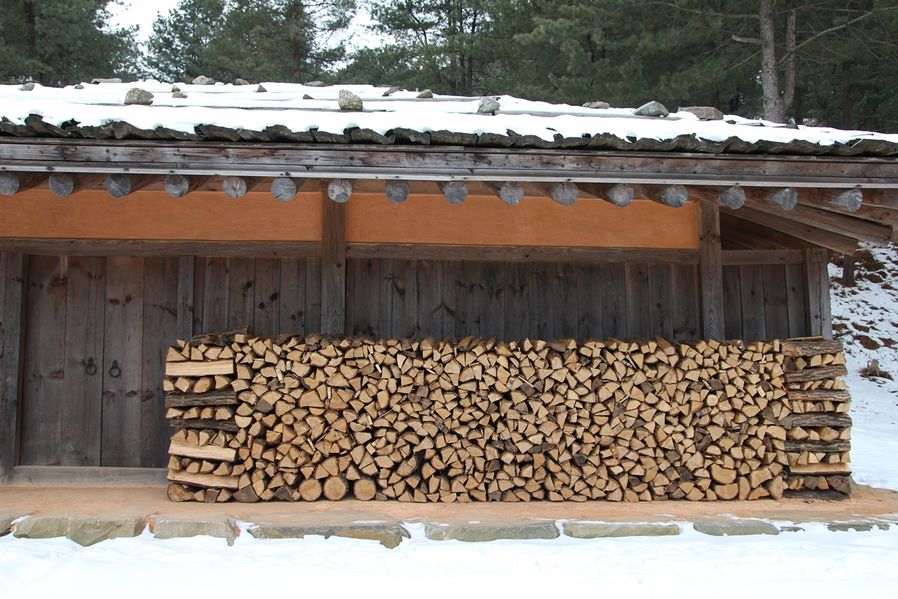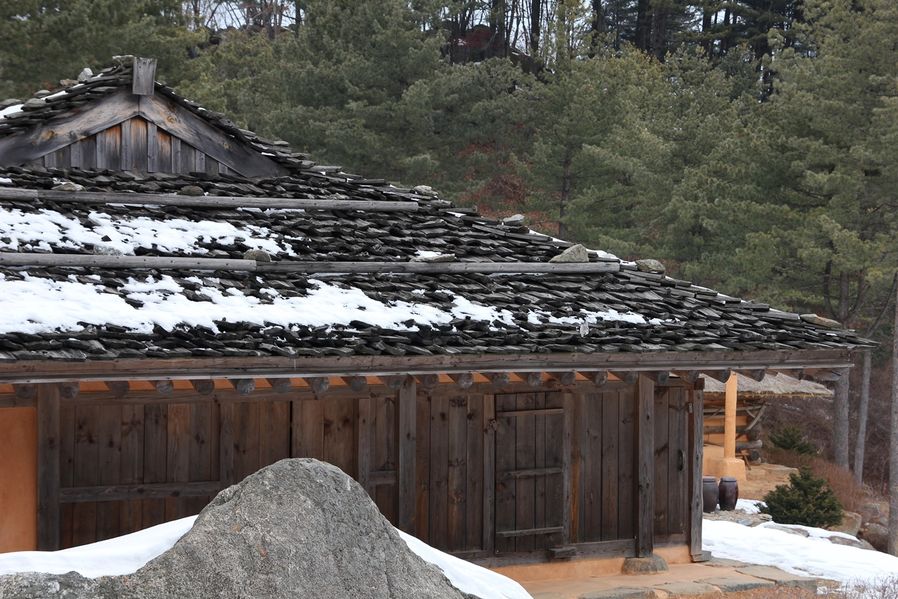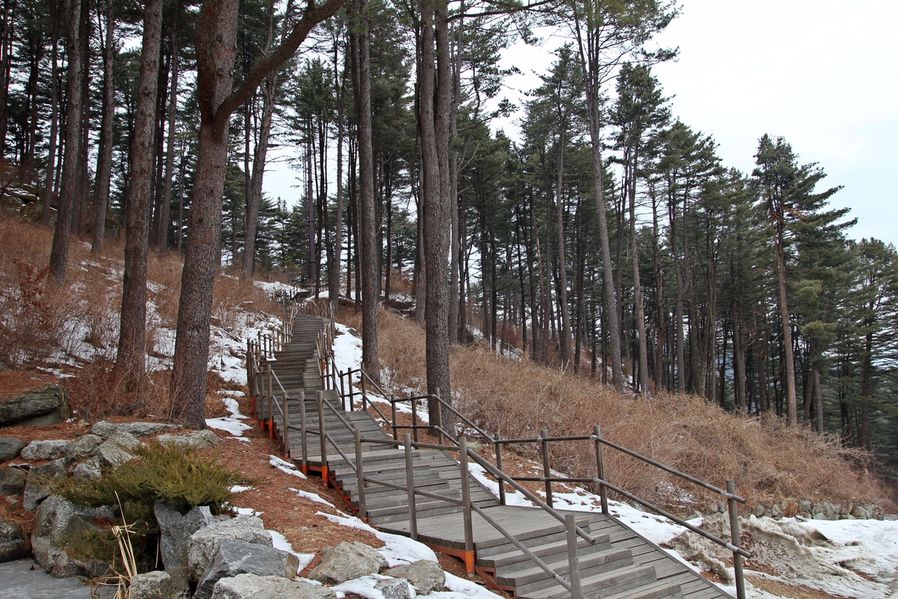-
Start
-
Pureun Sup
-
Songwon
-
Garden
-
Farm Pension
-
Winter Festival
-
Lee Hwa Won
-
Songwon Makguksu
-
Petite France
-
Star Light Festival
-
Finish
For this first time traveling Gapyeong, I visited 'Jat-Hyanggi Pureun Sup'. The highway between Seoul and Chuncheon was opened few years ago. The train ITX-Cheongchun travels from Seoul/Gyeonggi to Chuncheon. This place is very accessible destination from the capital area, because you could go to Gapyeong station at once by the train.
Jat-Hyanggi Pureun Sup is located at an altitude of 450 to 600 meters. It is at the mountain-foot of Chukryeong mountain and Seori mountain packed with over 80 year-old pine nut trees. It's the biggest habitat of pine nut tree. It's a forest recreation site that has programs of forest experience full of phytoncide and forest healing. Let's walk the quiet way/secluded path covered by snow and heal our body and soul/mind together.
When passing by the ticket booth, the way up the hill is very beautiful. There were full of pine nut trees around and snow on sides of the beautiful road made of trees. When you step on snow in the forest, its feeling should be completely different from doing in the city. It was good to hear the crisp snow crackling under feet.
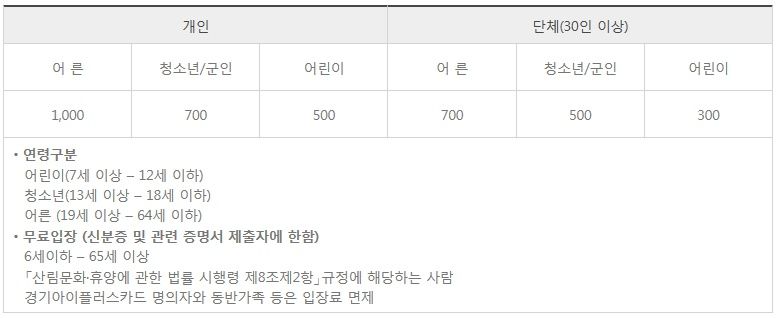
Normally, you need to pay for entrance fees, but it was not required that day, maybe because this place doesn't run a healing center where you could check up your health, meditate, and experience 'Hwangtobang (yellow soil room) in the winter. It may restart to collect entrance fees in the spring.
The pine nut trees were put aside. They were cut down when people had arranged a ramp. Heart-shaped sections of the tree look so pretty. I'm planning to go camping in the winter and I would like to bring chop them down. A pine nut tree is the tree that produces pine nuts and grows in the alpine region. It grows straight up over 30 meters. The size of the pine nut forest in Chukryeong mountain is the biggest in Korea. The pine nut forest is called, 'Chukryeong-baekrim' which is the scene 7 out of 8 scenes of Gapyeong.
It snowed few days ago and the ankle-high of snow piled up. Jat-Hyanggi Pureun Sup is surrounded by mountains, so once snow falls, it doesn't melt much.
If you walk up to the hill, you could see buildings. There is a Chukkryeong-baekrim museum and a carpenter's room. In the carpenter's room, you can experience wooden tools making small tables and chairs. Chukryeong-baekrim museum features pine nuts.
It was good to be inside of the museum, because outside was a bit chilly. Samples of animals and plants grow up in the forest are displayed in front of the entrance. Seeing a lot of taxidermied animals makes me feel I'm in a small zoo.
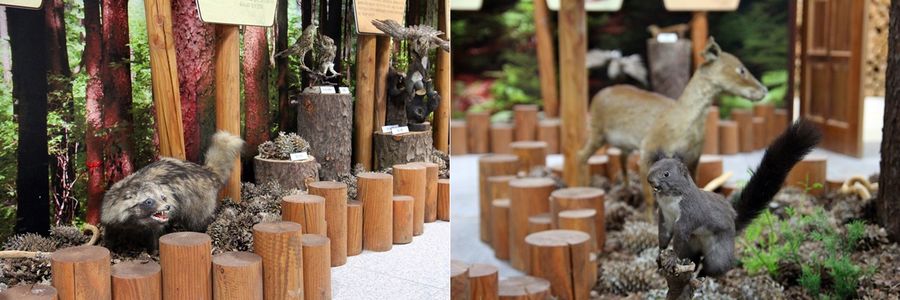
You could see a squirrel, an elk, and a raccoon. I saw the elk in the forest. I couldn't take a picture of him, because he ran away so fast.
The museum was displaying tools that produce pine nuts and the process of pine nut making. There might be a lot of things to talk about together when coming with children.
The process of making pine nuts that we eat was explained by the character of the squirrel whose food is pine nuts. Cute squirrel character made me concentrate on the explanation.
The walls covered with the trunks and the branches of pine nut trees are very beautiful. It would be perfect to highlight with pine cones, Jat Solbangul. It would be nice to decorate small sections in the houses.
Let me walk into the woods to enjoy the phytoncide that pine nut trees sent out. There is a small tree from the side of rock. Doesn't it look like branches are covered all over with ice?
If you take a near view, you could see all over icicles hanging from the tree branches.Snowfalls and melting snow on branches and leaves made the pretty shape as they were laminated with ice. I've never seen a scene like this, amazing.
Leaves left from this autumn were iced together It seems like a pretty glass work. Just snow fell on the branches and melted down, but melting snow made wonderful art.
You could see a water mill walking along the road. Normally except the winter,stream from the mountain-foot of Chukryeong mountain runs the water mill. It may sound very beautiful. It must be installed to show that the sound can be one of scenes.
Is it because here is the habitat of pine nut tree? Pine nuts are spread all over the ground! I thought picking it up that it was just a big cone, but it was the fruit called 'Jat Solbang-ul'(pine cone).
I shook the pine cone a little bit, but its fruits were clattering down. I bit one of the fruits. Yes, it's the one which is fresh. If I took them to eat, squirrels must have had nothing for the winter, so I just walked again putting them aside of the road. ^^*
You could find a reproduction of slash-and-burn farmers village. In 1960's and 1970's, slash-and-burn farmers in Chukryeong mountain were living in shingle-roofed houses. You could see the reproduction of their houses and log cabins, and charcoal kilns to their original forms.
This thatched house called 'Gwiteuljip'(Log cabin) is the typical house of slash-and-burn farmers. Logs were piled up in pound(井) shape. Walls were made with soil filling gaps. Then, shingles made of oak bark were put on the top as a roof. This kind of roof was formed in the mountainous areas where people couldn't do rice farming.
There were big icicles hanging from roofs. Nowadays, it's hard to see these icicles in the city, but everyone has icicles in their yard in the past. At that time, the air was clear, so we could break them off and hold them in the mouth.
One side of the village, there was a charcoal kiln site. During the time when fuel was not common, the charcoal kiln was used for heating by burning the charcoals. The farmers sold the crops or charcoals to earn a living. I could imagine how exhausting their life was.
There were bundles of firewood in front of the shingle-roofted house. Recently, city dwellers would regard firewood as an interesting toy to play while they are on a camping, but it was very important material that decided the life and death during the winter.
In mountainous areas, slash-and-burn farmers couldn't find much rice straw and make thatched roofs, either. They made shingle-roofs with pine nut and fir trees. I heard it's hard to maintain its original shape now, because the number of architects who can build shingle-roofed houses is gradually decreasing. I'm thankful to see the reproductions of the house with shingle-roofs.
If you walk from place to place, you could see a path through a forest crammed with hundreds of thousands of pine nut trees. There were 60 to 80 year-old thin trees. The rich forest consisted of seedlings planted before and after the Liberation of 1945. It's told that lots of phytoncide from the pine nut trees works better than from other trees. It's also good for boosting the immunity. There were many paths up a mountain with various types of trees. Besides, in 'Jat-Hyanggi Pureun Sup', there were diverse walking courses; 1km-course for children, 3km for students and couples, and over 4km for adults. Enjoy the courses and get phytoncide as much as you like.
Pine nut trees also grow in China and Japan, but the origin place of pine nut trees is Korea. That's why it's also called 'Korean Pine' in English.
Address : 289-146 Chukryeong-ro, Gapyeong-gun, Gyeonggi-do (경기도 가평군 축령로 289-146)
Telephone :031-8008-6769, 6771
Open hour :09:00 ~ 18:00 (Winter, until 17:00)
Open date : Monday ~ Sunday (Closed on Tuesday / Open if Tuesday and Wednesday are holidays)
Reservation : Homepage (http://farm.gg.go.kr/) / Telephone : 031-8008-6769
Participation fee : Free (Except material fee for Wood Experience program)












